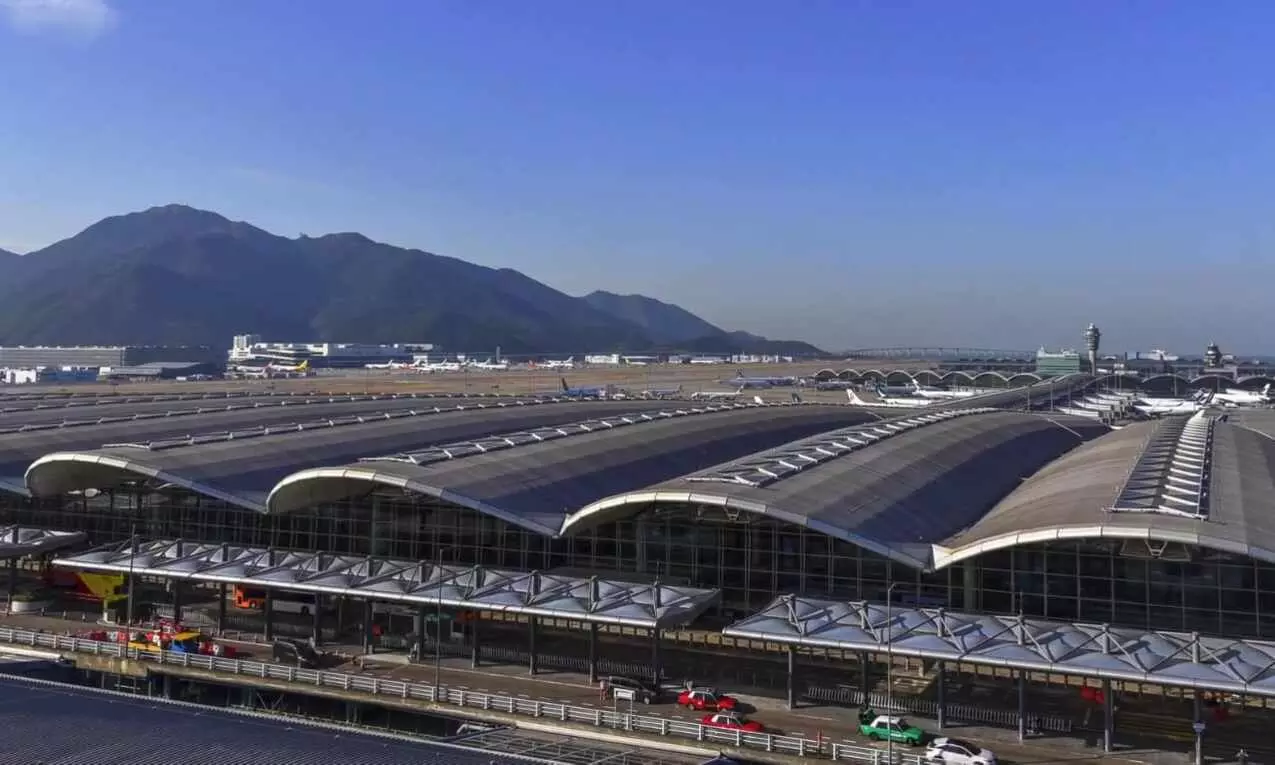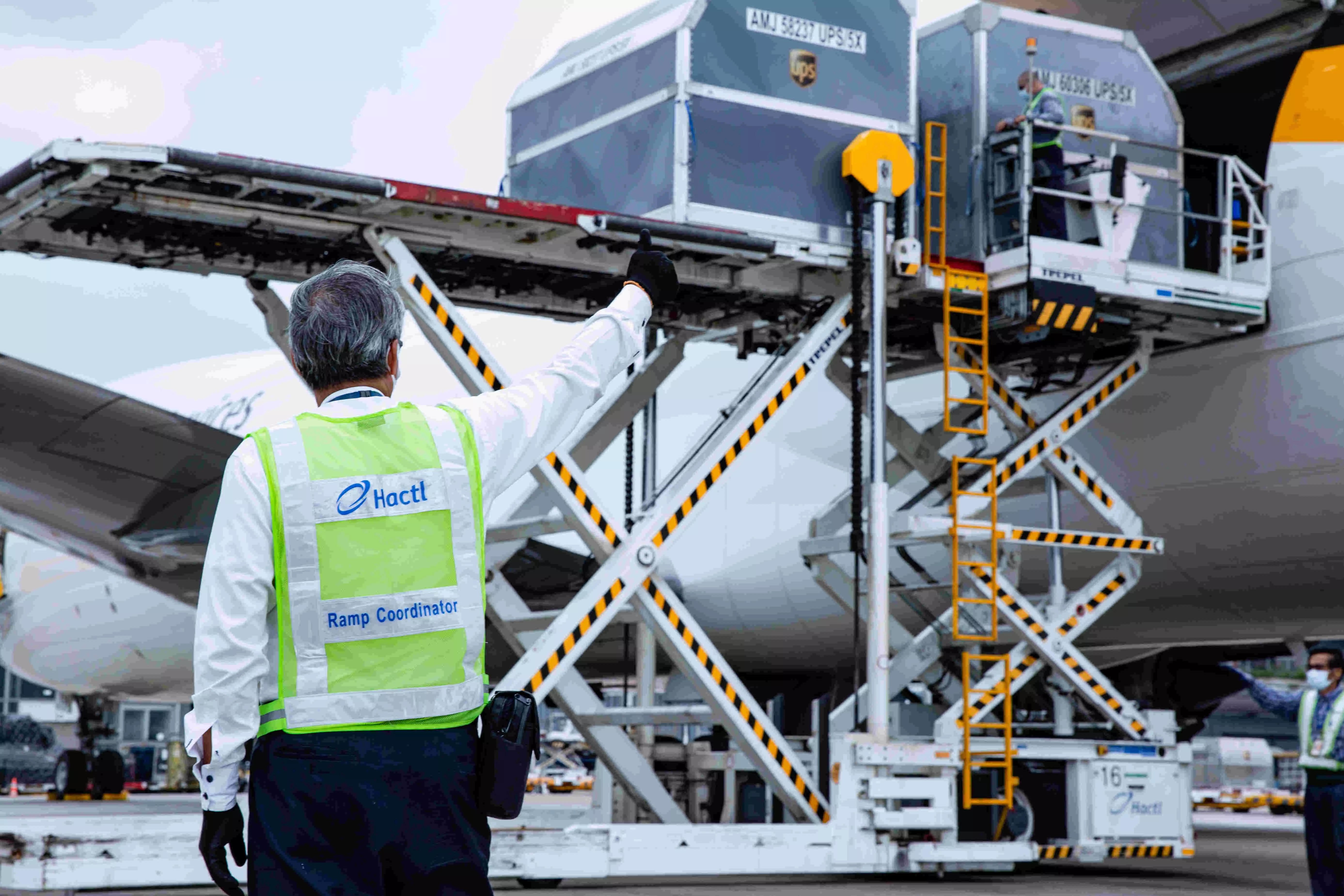
Can Hong Kong continue its air cargo dominance?

Hong Kong International Airport
Long hailed as the undisputed king of air cargo in Asia, Hong Kong now faces stiff competition from mainland China. While its strategic location, world-class infrastructure, and efficient logistics network remain valuable assets, the question remains: can it hold onto its crown in the face of this growing challenge?
In today's interconnected world, air cargo has emerged as the backbone of global trade, driven by the relentless demand for swift deliveries and the surge in e-commerce activity.
Valued at $200 billion in 2022, the global air cargo market size is poised for significant growth projected to achieve a compound annual growth rate (CAGR) of 5% by 2032, as per a report by Global Market Insights. Hong Kong, a vibrant city nestled on China's southern coast, has long been a key player in global trade. Its strategic location at the crossroads of East and West, coupled with its business-friendly environment inherited from its British colonial past, has fostered a unique cultural blend. This, combined with world-class infrastructure and an efficient logistics network, has cemented Hong Kong's position as a leading air cargo hub in Asia.
Hong Kong's dominance in air cargo
Since 1996, Hong Kong International Airport (HKIA), managed by Airport Authority Hong Kong (AAHK), has maintained its status as the world's busiest airport for international cargo volume, underscoring the city's rich legacy in the air cargo industry. AAHK's figures reveal that HKIA handled 4.3 million tonnes of cargo throughput in 2023, marking a 3.2% annual growth. January 2024 continued this positive trajectory with a 31.1% year-on-year increase in cargo throughput, reaching 377,000 tonnes, alongside a substantial 44.5% surge in exports. Notably, traffic to and from key trading regions such as North America, Europe, and the Middle East saw significant boosts during the month.
Its strategic location at the heart of Asia offers unparalleled air connectivity, acting as a vital bridge between North America, Europe, and Asia. This translates to direct flights to key business centers worldwide, facilitating smooth cargo movement. Additionally, HKIA boasts state-of-the-art infrastructure with dedicated cargo terminals and efficient customs clearance. Moreover, Hong Kong possesses a highly skilled workforce with extensive experience in air cargo logistics, ensuring seamless operations. The city's well-established legal framework and pro-business government contribute to a business-friendly environment that attracts foreign investment and fosters trade, further solidifying its position as the air cargo hub of Asia.

"Although geopolitical issues can produce headwinds, they can also spell opportunity – as we are already seeing from current ocean services disruption in the Red Sea, leading to a modal switch to air cargo for speed and security reasons. For Hong Kong, the future looks even better."
Wilson Kwong, HACTL
Hong Kong's air cargo dominance stems from its world-class infrastructure. HKIA, a global leader in cargo volume handled, boasts a network of advanced cargo terminals handling diverse goods like perishables and pharmaceuticals. Major cargo handling companies operating at HKIA include Hong Kong Air Cargo Terminals Limited (HACTL), Asia Airfreight Terminal (AAT), Cathay Cargo Terminal (CCT), DHL Central Hub, and the Air Mail Centre. This efficiency is bolstered by HKIA's existing two runways, with a third under construction for a projected 30% capacity increase upon completion in 2024. Additionally, HKIA's air traffic management system minimises delays for time-sensitive cargo shipments.
This ongoing expansion, known as the Three-Runway System (3RS), includes a new runway, terminal expansion, and infrastructure upgrades. By 2024, the completed 3RS is projected to allow HKIA to handle 10 million tonnes of cargo annually, signifying a significant increase from the 4.2 million tonnes handled in 2022.
HACTL is Hong Kong’s largest independent cargo handler, serving more than 100 airline companies and 1,000 freight forwarders. Launched in 1976, its base, SuperTerminal 1, is Hong Kong’s largest cargo handling facility with an annual design capacity of 3.5 million tonnes. Beyond providing terminal space, HACTL is a key player in the city's air cargo efficiency. The terminal handles all cargo types, from general goods to perishables, and provides ground support services for airlines. They also handle customs documentation, minimising delays. As industry leaders, they embrace technology like automated vehicles and prioritise sustainability through practices like electric vehicles and energy-efficient equipment. This combination of experienced workforce, comprehensive services, and commitment to innovation solidifies Hong Kong's leading position in global air cargo.
To maintain Hong Kong’s competitiveness as a trading and logistics hub, the government of the Hong Kong Special Administrative Region has also introduced a Trade Single Window (TSW) to provide a one-stop electronic platform for the trading community to lodge import and export trade documents with the government.

"The pandemic had significantly affected our operations, with only cargo freighters and passenger freighters were in operation."
Vivien Lau, JASG
Beyond the airport facilities, Hong Kong has built a logistics network that connects air cargo to its various destinations. A well-maintained network of highways and ports facilitates the smooth transfer of cargo between the airport, other parts of Hong Kong, mainland China, and neighbouring regions. Recognising the growing importance of e-commerce, Hong Kong has established a supportive ecosystem with efficient customs clearance processes and streamlined last-mile delivery solutions. Further enriching this network is the strong presence of leading international and regional logistics companies, many of which have established their regional headquarters in Hong Kong, contributing their expertise and enhancing the overall efficiency of the city's air cargo operations.
Sustainability measures
Transitioning into the realm of sustainability, Hong Kong’s commitment to environmental responsibility emerges as a natural extension of its attempt to maintain competitiveness in the industry. Initiatives include using electric ground handling equipment, reducing reliance on paper-based processes, and investing in energy-efficient infrastructure at terminals, and more.
“Cathay has a target of using SAF for 10% of its total fuel consumption by 2030. In February 2024, Cathay Cargo Terminal became the first cargo terminal in Hong Kong to adopt 50% recycled plastic cargo cover sheets for all export argo shipments built up within its terminal, increasing from its current specifications of no less than 30% recycled content.”
On the other hand, AAT is planning to deploy Autonomous Electric Tractors (AET) within their operations, which is currently under trial. “We aim to adopt this cutting-edge technology for not only improving operational efficiency and also contributing to sustainability efforts by reducing carbon emissions,” stated Mike Chew, Chief Executive Officer, AAT.
Overcoming pandemic challenges
Hong Kong's air cargo industry, like many others worldwide, faced significant challenges due to the Covid-19 pandemic. Disrupted global supply chains led to delays and uncertainties in transporting goods. The decrease in passenger flights meant less "belly cargo" capacity, further impacting cargo movement. Changing consumer behaviour during lockdowns and economic downturns caused fluctuations in demand, with a surge in e-commerce goods and a decline in perishable food shipments.
“Business-wise, Hactl’s traffic profile changed dramatically, particularly in 2020 and 2021: passenger flights almost disappeared, to be replaced by unprecedented levels of freighter movements, and a boom in overall cargo throughput. This necessitated further streamlining of our processes, particularly on the ramp; and re-writing of the software that controls our huge Container Storage System, to increase its capacity, speed and efficiency,” said Wilson Kwong, Chief Executive Officer, HACTL.
The cargo operations of Jardine Aviation Services Group (JASG), a leading ground handling services company operating at HKIA since 1946, were also affected by the pandemic. Speaking about the same, Vivien Lau, Chief Executive, JASG said, “The pandemic had significantly affected our operations, with only cargo freighters and passenger freighters were in operation.”
Despite the upheaval caused by the pandemic, the cargo industry in Hong Kong displayed resilience, emerging with a proactive attitude to navigate through the challenges. “Despite the downsized business during Covid-19, we were able to mobilise our staff from 12 different functions to support our cargo business, demonstrating our team's resilience and adaptability. We seized the opportunity to upgrade the Resource Management System (RMS). It enabled us to manage our resources more efficiently and effectively. In addition, we conducted a thorough examination of our customer portfolio, carefully matching it against our resource plan,” added Lau.
“Covid-19 led Hactl to speed up its transition to digital processes, to facilitate remote working for our admin staff. A large investment in a fully-secured wide area network infrastructure (WAN) was accompanied by the eradication of many paper-based processes to avoid the need for physical presence in our offices and remove risk of infection via paperwork. It also led to the early launch of our planned Integrated Hactl Control Centre (iHCC), which centralised all management of our entire operation in the terminal and on the ramp, provides visual displays of all operations down to the location of every pallet and dolly, and facilitates optimal deployment of resources based on real-time workflow data and demand modelling,” said Kwong.
“Cathay was a vital service provider towards the containment of the pandemic by quickly delivering pharmaceuticals, medical equipment and personal protective equipment such as masks that were urgently needed around the world. During the downtime, Cathay was operating a bare skeleton passenger flight schedule in April and May 2020, measures were taken to supplement capacity with cargo-only passenger flights to many other destinations around the globe,” Rajesh Menon, Regional Head- SMEA, Cathay Cargo.

A new challenge
While the Hong Kong air cargo industry managed to emerge from the pandemic challenges, a new contender has emerged in the form of its neighbours, Shenzhen and Guangzhou. The Greater Bay Area (GBA) initiative, launched by Beijing in 2019, aims to integrate Hong Kong, Macau, and nine Guangdong cities, including Shenzhen and Guangzhou, into an economic powerhouse by 2035. This plan envisions Hong Kong as a leading international aviation hub, facilitating seamless cargo movement within the vast 56,000 sq km region. However, this vision faces a challenge as the mainland Chinese cities namely Shenzhen and Guangzhou are aggressively developing their own air cargo infrastructure, aiming to capture a significant share of the GBA’s air cargo market.
Shenzhen's Bao'an International Airport is undergoing a massive expansion, including the construction of a new terminal specifically dedicated to cargo with an aim to increase the annual cargo volume to 2.1 million tonnes and move towards a future annual handling capacity goal of 4.5 million tonnes. Similarly, Guangzhou is investing heavily in its Baiyun International Airport, including the construction of its fourth and fifth runway by 2025 with an expected cargo throughput capacity of 3.8 million tonnes. These investments, coupled with their proximity to mainland China's vast manufacturing base, pose a significant challenge to Hong Kong's long-held dominance in the region's air cargo industry.

"We see the growing competition as an encouraging sign that motivates Hong Kong to continuously improve and secure its competitiveness in the aviation industry."
Mike Chew, AAT
“We acknowledge the growing competition from Shenzhen and Guangzhou airports in terms of cargo handling capacity and infrastructure development. However, we see this competition as an encouraging sign that motivates Hong Kong to continuously improve and secure its competitiveness in the aviation industry,” added Chew about the intensifying competition.
“HKIA is well-positioned to maintain its leading role as an air cargo hub despite increasing competition from mainland China and regional players like Shenzhen and Guangzhou. The central government's reassurance to maintain HKIA's status as an aviation hub is a vote of confidence for the Hong Kong air cargo business,” added Lau.
“To some degree, the growth of cargo operations and throughput at some Chinese mainland airports is a result of the glass ceiling on freighter operations at HKIA, when we were reaching slot saturation. Now that the third runway has been built, and our second runway is poised to re-enter service after extensive refurbishment, the limit on freighter operations will be removed, facilitating organic growth once again,” asserted Kwong.
Hong Kong stands out as a crucial player in global trade, thanks to its strategic location, world-class infrastructure, and efficient logistics network. As a free port with streamlined customs procedures, it seamlessly facilitates the movement of goods, particularly through its air cargo hub, HKIA. This airport consistently ranks among the busiest globally, handling a significant portion of Hong Kong's trade value.
“As the global population increases, more countries develop industry and wealth, and e-commerce replaces traditional routes to market, the future for air cargo as a whole looks very positive. And, although geopolitical issues can produce headwinds, they can also spell opportunity – as we are already seeing from current ocean services disruption in the Red Sea, leading to a modal switch to air cargo for speed and security reasons. For Hong Kong, the future looks even better,” concluded Kwong.
Looking ahead, Hong Kong's air cargo industry is poised for continued growth, fueled by factors like its integration with the Greater Bay Area and the increasing demand for faster and more reliable air freight services. However, the industry faces challenges, such as rising competition from regional players and potential disruptions from geopolitical events. Despite these, Hong Kong's strong foundation and strategic focus position it to remain a vital force in the global air cargo landscape.

